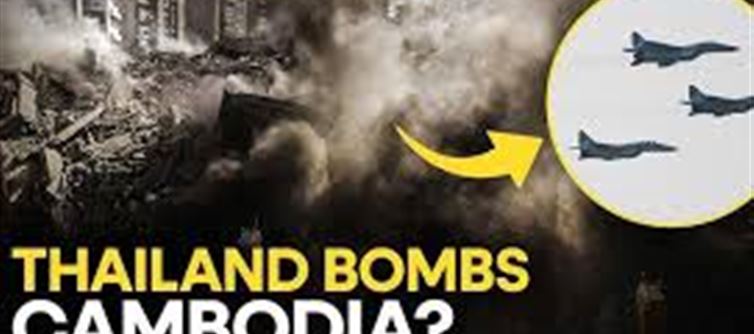The ongoing border dispute between
thailand and
cambodia escalated on
thursday (July 24, 2025). At least 12
people have died so far in the recent tension between the two neighboring countries of Southeast Asia. On
thursday (July 24), the tension between these two countries increased so much, in which
cambodia attacked
thailand with rockets and in retaliation,
thailand airstrike Cambodian
army camps with F-16
fighter planes. However, the reason for the ongoing border dispute between these two countries is a Hindu
temple, in which Lord
shiva is installed as the main deity. According to the official portal of
thailand Tourism, this controversial
temple located on the Thailand-Cambodia border is called Prasat Ta Muen Thom, which is part of an archaeological site. Apart from this
temple, two more Khmer style structures are also present, which are religiously important parts of this archaeological site. All these are located in the Dangrek Mountains in Ban Nong Khana area of Thailand. Apart from Prasat Ta Muen Thom, the two other religious sites are Prasat Ta Muen and Prasat Ta Muen Tot. All these three sites are at the center of the Thailand-Cambodia dispute. But Prasat Ta Muen Thom is prominent in it.
What is the
history of Prasat Ta Muen Thom?
Prasat Ta Muen Thom
temple, located at the center of the Thailand-Cambodia dispute, was built as a Hindu
temple by Emperor Udayadityavarman II around the 12th century. This
temple is located about 800 meters south of Prasat Ta Muen Tot. Lord
shiva is established as the
supreme deity in this
temple and it is the oldest and largest of the three Prasat structures. Prasat Ta Muen Thom has a main palace, which is located in the middle of it and is the largest. While the other two smaller palaces are located on its right and left sides. It is made of sandstone and its entrance is towards the south.
Many important evidences are present inside the main prasat of the temple
According to the official portal of
thailand Tourism, there are many important evidences inside the main prasat of this
temple, including a Shivling made of natural stone. A waterway emerges from this Shivling, which goes through the main prasat to the eastern part of the balcony. Apart from this, two libraries made of laterite are located in the south-east and south-west corners of the main prasat. At the same time, there is also a curved corridor made of sandstone around the entire structure of the
temple and a
pond made of laterite is also located just outside this corridor on the northern side.






















